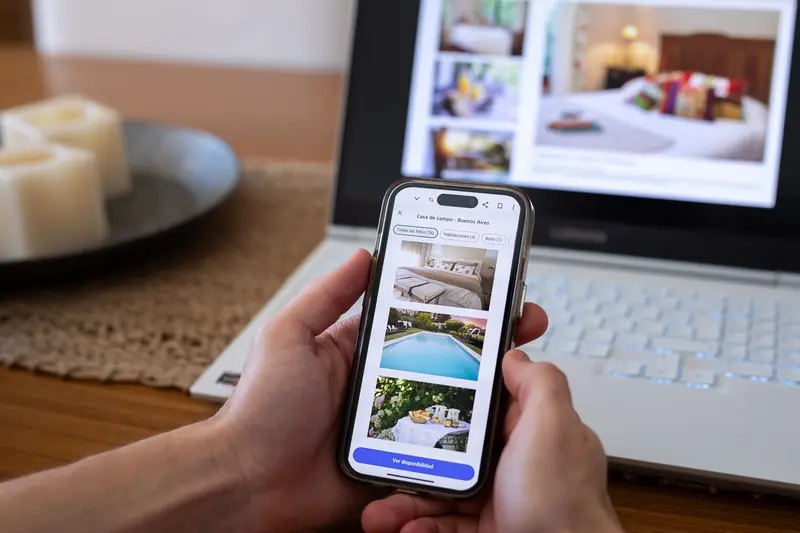How Do I Test My App With Different IoT Devices?
A major retail chain launches their new smart shopping mobile app, complete with features that connect to in-store beacons, smart shelves, and contactless payment terminals. The app works perfectly on the development team's devices. Launch day arrives and suddenly customers are reporting that the app crashes when connecting to certain IoT devices, won't sync with older beacon models, and refuses to communicate with some payment terminals. The company faces angry customers, negative reviews, and significant revenue loss—all because they didn't test their mobile app properly across different IoT devices.
This scenario plays out more often than you might think. As mobile apps become increasingly connected to the Internet of Things, testing has become far more complex than it used to be. We're no longer just checking if an app works on different phones; we need to make sure it communicates seamlessly with smart watches, fitness trackers, home automation systems, industrial sensors, and countless other connected devices.
The biggest mistake developers make is assuming that if their mobile app works with one IoT device, it will work with all similar devices
Device testing and compatibility issues can make or break your mobile app's success. Each IoT device has its own communication protocols, operating system quirks, and hardware limitations. What works flawlessly with a Samsung smart TV might fail completely with an LG model. Your app might connect perfectly to a Fitbit but struggle with a Garmin device. This guide will walk you through the practical steps of testing your mobile app across different IoT devices, helping you avoid costly mistakes and deliver a reliable user experience that actually works in the real world.
Understanding IoT Device Testing Basics
Testing apps with IoT devices can feel overwhelming when you're just starting out—there are so many different gadgets, protocols, and connection types to consider. But here's the thing: once you understand the fundamentals, the whole process becomes much more manageable.
IoT devices are basically any gadgets that connect to the internet and can talk to your app. We're talking about smart thermostats, fitness trackers, home security cameras, connected cars, and thousands of other devices. Each one has its own personality, if you will—different ways of communicating, different operating systems, and different limitations.
What Makes IoT Testing Different
Unlike testing a regular mobile app where you're dealing with phones and tablets, IoT testing means working with devices that might have tiny screens, no screens at all, or completely different input methods. Some devices run on battery power and need to conserve energy, whilst others are plugged into the wall and can handle more intensive tasks.
The communication part is where things get interesting. Your app might need to talk to devices using WiFi, Bluetooth, cellular networks, or even more specialised protocols like Zigbee or LoRaWAN. Each connection type has its own quirks and potential failure points.
Real-World Challenges
What makes IoT testing particularly tricky is that these devices exist in the real world—not just in controlled lab environments. A smart doorbell needs to work in freezing weather and blazing heat. A fitness tracker needs to handle sweat, movement, and occasional drops. Your app needs to be ready for all of these scenarios, which means your testing approach needs to account for real-world conditions from day one.
Planning Your Testing Strategy
Right, let's talk about planning your mobile app testing strategy for IoT devices—and trust me, this isn't something you want to wing. I've seen too many developers jump straight into testing without a proper plan, only to realise they've missed half the devices their users actually own. The key here is being methodical about your approach whilst keeping your sanity intact.
Start by identifying which IoT devices your mobile app needs to connect with. This sounds obvious, but you'd be surprised how many teams forget about the less popular devices that still make up a decent chunk of their user base. Create a priority list based on your target market—smartwatches might be top priority for a fitness app, whilst smart home hubs could be the focus for a home automation mobile app.
Device Categories and Testing Priorities
Your testing strategy should cover these device categories in order of importance:
- Primary devices (most common among your users)
- Secondary devices (moderate usage but different protocols)
- Edge cases (uncommon but potentially problematic)
- Future devices (upcoming releases in your target market)
Don't try to test every single IoT device on the market—you'll never launch! Focus on covering 80% of your user base's devices first, then expand your compatibility testing from there.
Resource Allocation
Budget your time and resources carefully. Device testing can quickly become a money pit if you're not careful about scope. Set realistic timelines and remember that mobile app compatibility issues often surface in unexpected combinations—it's not just about individual device performance but how well your app handles switching between different IoT connections.
Setting Up Your Testing Environment
Right, so you've got your testing strategy sorted—now comes the fun bit of actually getting everything set up. Trust me, having a proper testing environment makes all the difference between catching issues early and discovering them when your users start complaining.
The first thing you'll need is a dedicated space for your testing setup. This doesn't mean you need a fancy lab (though that would be nice!), but you do need somewhere you can leave devices connected and running tests without someone unplugging them to charge their phone. A spare room, corner of the office, or even a large desk will do perfectly fine.
Getting Your Devices Connected
Start by gathering all the IoT devices you plan to test with—smart bulbs, thermostats, sensors, whatever your app needs to talk to. You'll want to connect these to a separate network if possible; this way you can control the testing conditions without affecting your main internet connection. A basic router dedicated to testing works brilliantly for this.
Next, set up your monitoring tools. You'll need something to track network traffic, device responses, and connection stability. There are plenty of free network monitoring tools available—Wireshark is a solid choice for packet analysis, whilst simple network monitors can help you spot connectivity issues quickly.
Documentation and Organisation
Keep a simple spreadsheet or document listing all your test devices, their firmware versions, connection details, and any quirks you discover. This becomes invaluable when you're trying to reproduce a bug weeks later and can't remember which device was acting up.
Finally, make sure you've got power management sorted. IoT devices love to run flat at the worst possible moment, so having spare batteries, USB power supplies, and extension leads within reach will save you hours of frustration down the line.
Testing Connectivity and Communication
Right, let's get into the meat of IoT device testing—making sure your mobile app can actually talk to all those smart gadgets. This is where things get interesting because you're not just testing one thing; you're testing the conversation between your app and potentially dozens of different devices.
The first thing I always check is the basic handshake between the app and device. Can they find each other? Can they connect? Sounds simple, but you'd be surprised how many apps fail at this first hurdle. Start with your most common devices—the ones your users are most likely to have. Test the initial pairing process multiple times because sometimes it works the first time but fails on subsequent attempts.
Signal Strength and Range Testing
Once you've got basic connectivity sorted, you need to test how your app behaves when the signal gets weak or drops entirely. Walk around with your device; go to different rooms, different floors if you can. Your app should handle these scenarios gracefully—not just crash or freeze when the WiFi gets patchy.
Testing connectivity isn't just about whether it works; it's about how well it fails when things go wrong
Protocol Compatibility
Different IoT devices speak different languages—some use WiFi, others use Bluetooth, Zigbee, or Z-Wave. Your mobile app needs to be fluent in whatever protocols your target devices use. Test each protocol separately first, then test combinations if your app supports multiple connection types. Don't forget to test what happens when devices switch between protocols or when multiple devices are competing for the same connection.
Performance Testing Across Devices
Performance testing with IoT devices can feel like trying to juggle whilst riding a unicycle—there are so many variables at play. Different devices have different processing power, memory limitations, and network capabilities. Your app might run perfectly on your high-end smartphone but struggle on a basic smartwatch or older tablet.
Start by identifying which metrics matter most for your specific IoT setup. Battery drain is often the biggest concern; nobody wants their smart doorbell dying after two hours. Response time matters too—if your app takes thirty seconds to turn on a light, people won't use it. Memory usage becomes critical on smaller devices that might only have 512MB of RAM to work with.
Testing Different Device Categories
You'll need to test across various device types to get a complete picture. Wearables behave differently from smart home hubs, which behave differently from industrial sensors. Each category has its own performance quirks and limitations.
- Smartwatches and fitness trackers (limited processing power)
- Smart home devices (variable network conditions)
- Industrial IoT sensors (extreme environments)
- Connected vehicles (intermittent connectivity)
- Medical devices (strict reliability requirements)
Monitoring Real-World Conditions
Lab testing only tells half the story. Real-world conditions include poor WiFi signals, overheating devices, and competing apps using system resources. Set up monitoring tools that track performance metrics during actual usage—not just controlled testing scenarios.
The key is testing early and often across your target device range. Don't wait until the end of development to discover your app crashes on half your intended devices. Performance issues are much easier to fix when caught early.
Handling Different Operating Systems
When you're testing your mobile app with different IoT devices, you'll quickly discover that operating systems can be your biggest headache. Each OS has its own personality—Android behaves differently from iOS, and both handle IoT connections in their own special way. Your app might work perfectly on an iPhone but struggle to connect to the same smart thermostat when running on a Samsung Galaxy.
The main challenge comes from how each operating system manages permissions and network protocols. iOS tends to be more restrictive with Bluetooth and Wi-Fi connections, often requiring explicit user permission for each type of connection. Android gives apps more freedom but varies significantly between manufacturers—what works on a Google Pixel might fail on a Huawei device running their own Android skin.
Platform-Specific Testing Requirements
You'll need to test the same IoT device connection across multiple OS versions and manufacturers. Don't assume that because your app connects to a smart lock on iOS 15, it will work the same way on iOS 14 or the latest Android version.
- Test on at least three different Android manufacturers
- Include both current and previous iOS versions in your testing
- Check how each OS handles background app refresh with IoT connections
- Verify that permission requests appear correctly on all platforms
- Test network switching behaviour between Wi-Fi and mobile data
Always test your app's IoT connections after a fresh install on each operating system—cached permissions and settings can hide compatibility issues that new users will experience.
Remember that users often delay OS updates, so supporting older versions isn't just good practice—it's necessary for reaching your full audience. Your testing strategy should reflect the real-world mix of devices and OS versions your users actually have.
Troubleshooting Common Issues
Testing IoT devices with your app will throw up problems—that's just how it goes. I've seen developers get frustrated when their app works perfectly on one device but crashes constantly on another. The good news is that most issues follow predictable patterns, and once you know what to look for, fixing them becomes much easier.
Connection Problems Are Usually the Culprit
When your app can't talk to an IoT device, start with the basics. Check that both devices are on the same network and that the IoT device is actually powered on—sounds obvious, but you'd be surprised how often this trips people up. Look at your app's connection timeout settings too; some IoT devices are slower to respond than others, especially older models.
If the connection keeps dropping, the problem might be network interference or weak signal strength. Move your devices closer together during testing, or try switching to a different WiFi channel. Bluetooth connections can be particularly tricky—they don't like obstacles and have a much shorter range than people expect.
Data Format Mismatches
Different IoT devices send data in different formats, and your app needs to handle this properly. One smart thermostat might send temperature as "22.5" whilst another sends "22.5°C"—small differences that can break your parsing code. Keep detailed logs of what data each device sends so you can spot these inconsistencies quickly.
Battery-powered devices often go into sleep mode to save power, which means they won't respond to your app immediately. Build in retry logic and don't assume a device is broken just because it doesn't answer straight away.
Conclusion
Testing your mobile app with different IoT devices isn't just a nice-to-have—it's absolutely necessary if you want your app to work properly in the real world. I've seen too many apps launch with great fanfare only to crash and burn because they couldn't handle the variety of devices people actually use. The thing is, your users won't care that your app worked perfectly on the three devices you tested it with; they'll only care that it doesn't work on theirs.
What we've covered in this guide gives you a solid foundation for device testing, but here's the reality: this is an ongoing process. New IoT devices launch constantly, operating systems get updated, and user expectations keep rising. Your testing strategy needs to evolve alongside these changes. Start with the basics we've outlined—plan your approach, set up a proper testing environment, and cover the most common devices your users have.
The key is being systematic about it all. Don't just test randomly; follow a structured approach that covers connectivity, performance, and compatibility across different operating systems. When issues pop up (and they will), having good troubleshooting processes in place will save you hours of frustration.
Most importantly, remember that perfect compatibility with every single device out there isn't realistic—or necessary. Focus on the devices that matter most to your users, test thoroughly, and be prepared to iterate based on real-world feedback. Your future self will thank you when your app actually works for the people who matter most: your users.
Share this
Subscribe To Our Learning Centre
You May Also Like
These Related Guides

How Do I Plan Around Changing Phone Technologies?

How Much Cheaper Is It to Build a PWA Compared to a Native App?



